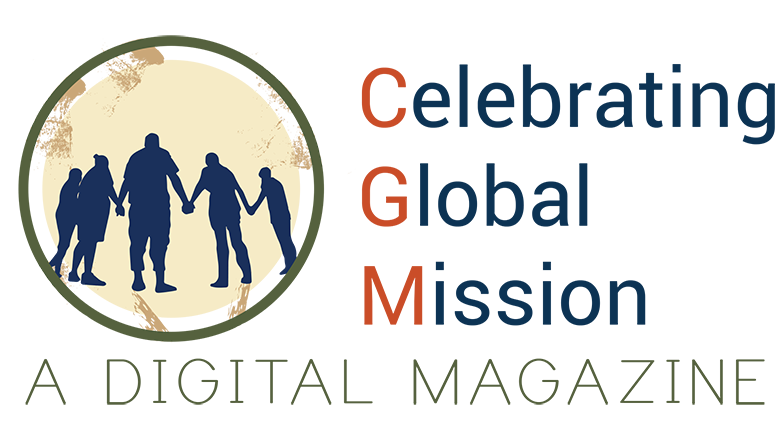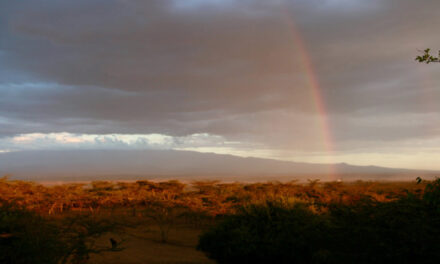(This article was co-written by Dr. David Isaacson and Rev. David Lerseth.)
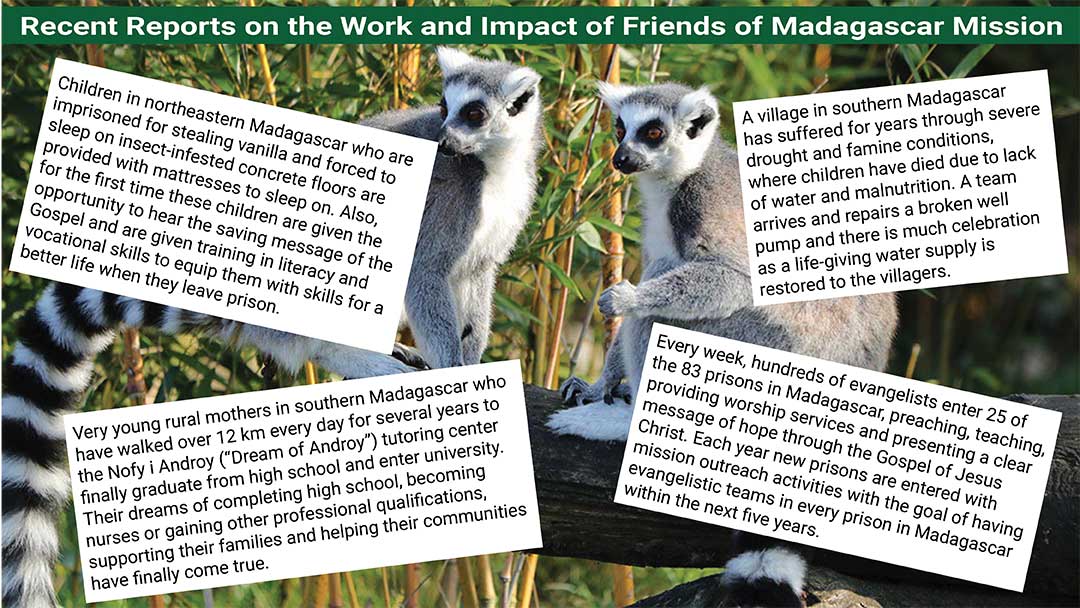
These are four of hundreds of stories of how Friends of Madagascar Mission (FOMM) has positively impacted lives and communities in Madagascar over the past 13 years.
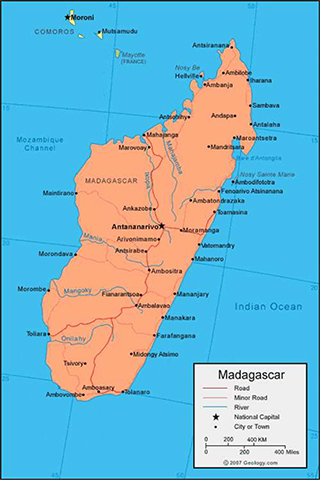
Madagascar
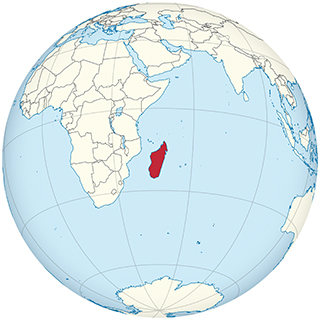
Madagascar – global view
The Birth of Friends of Madagascar Mission
Friends of Madagascar Mission became a reality on December 29, 2009 when it was legally formed as a 501(c)(3) organization by the nonprofit laws of the state of Minnesota. At the time FOMM was set up, the questions were asked: “Why another global mission organization?” and “Why Madagascar?”
To answer these questions, some understanding is required of the history of global missions, as well as the unique and often violent forces that have shaped the political landscape of Madagascar as a relatively isolated island nation of 25 million people.
The 18th and 19th Centuries – A Golden Era for Overseas Missions
“Then Jesus came to them and said, ‘All authority in heaven and on earth has been given to me. Therefore, go and make disciples of all nations, baptizing them in the name of the Father and of the Son and of the Holy Spirit, and teaching them to obey everything I have commanded you. And surely I am with you always, to the very end of the age.’”
Matthew 28:18-20
During the 18th and 19th Centuries there was a strong commitment by Christians around the world to be involved with missions – locally, nationally and internationally. This was based on Biblical admonitions, including Matthew 28:18-20.
In obedience to this imperative as well as the Great Commission (Mark 16:15), individual Christians, congregations and national church organizations prioritized mission work and evangelistic outreach to all corners of the world.
As new fields of harvest for the Gospel were discovered, missionaries were sent out and funds raised to support their ongoing work.
How Did Madagascar Fare in Global Mission?
With the increased vision for global outreach programs, mission work flourished in Madagascar as a result of the London Missionary Society (LMS), which started mission work in Madagascar in 1818. In 1866 the Norwegian Mission Society (NMS) joined the work and in 1888, the United Norwegian Lutheran Church was invited to join as well. From 1888 through 2022, 366 missionaries from the U.S. served in Madagascar, supported by the Evangelical Lutheran Church of America (ELCA) and its predecessor church bodies, who provided substantial financial support to grow the mission work.
Recent Influences on Mission Funding
However, over the past three decades, a range of influences has combined to create a radical decrease in mission funding for Madagascar. Influences include changing organizational priorities, the high cost of sending missionaries overseas, the demands for funding for new mission fields, and political changes in Madagascar. Sadly, a very different picture is presented today compared with the last century. Now, the Lutheran Church in the U.S. does not have any missionaries in Madagascar and the funding of mission support has shrunk to extremely low levels.
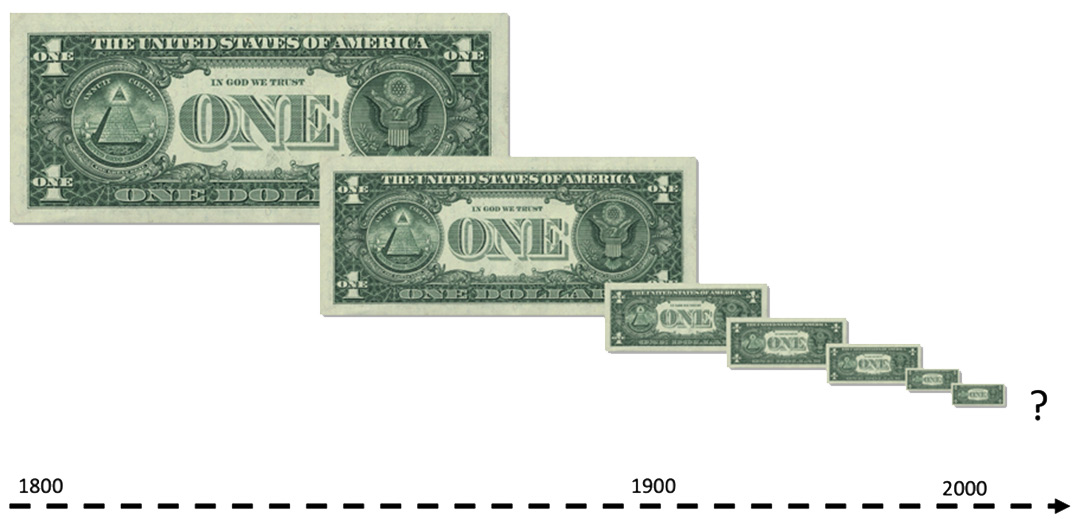
The shrinking donor dollar for mission
The above graphic shows the need for a new mission model, driven by the shrinking donor dollar for overseas mission programs from the 1800s to the 2000s.
The answers to the questions “Why Another Global Mission Organization?” and “Why Madagascar?” are clear. Without ongoing support, missions in Madagascar would be destined to become a historical relic.
It was in response to these factors, as well as a personal visit to the island in 2007, that Rev. David Lerseth, a retired Lutheran pastor, set up Friends of Madagascar Mission to continue evangelism and community building within the island nation.
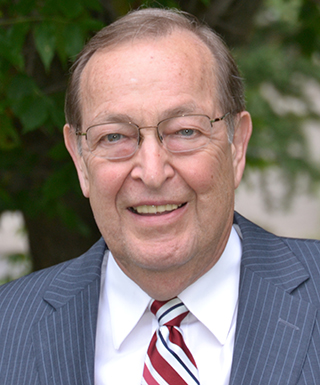
Rev. David Lerseth
More About Madagascar, Mission and Friends of Madagascar Mission
David had just retired after serving as a pastor of three different parishes, as an administrator to a bishop and as the Executive Director of Global Mission Support in the ELCA. From the vantage point of these senior roles, he was able to view the status of global mission. He saw that national church bodies had withdrawn their support of global mission over time, with Madagascar being no exception to this trend. He noted that some key reasons for this decline in support included the merging of churches into larger church bodies, with the result that the individual members and local congregations became further removed from the national church.
In addition, cultural attitudes toward Christian mission efforts were attacked as doing harm to those they were converting to the Christian faith. At a purely financial level, the model of sending families to the mission field came at a very high price, with airfares, accommodation, medical and school expenses, as well as regular furloughs. The expense of global mission became a burden to national church bodies and so the funding was steadily reduced.
Finally, the emphasis on evangelism was replaced with making mission purely a humanitarian concern.
However, David also observed a promising trend that provided some hope for ongoing mission work. While the financial support of large organizations for mission diminished, the vision for the Great Commission did not follow this pattern with individuals and local congregations. Smaller nonprofit organizations rose to assume support for mission across the globe. It is into such a climate that Friends of Madagascar Mission was born.
A Crossroads Is Reached
After retirement from church leadership roles, David reached a crossroad in terms of the next stage of his life and ministry.
“I did not believe that retirement was a good ending to a person’s life, so I created the word ‘refirement’. I wanted to continue to be in ministry/mission and was praying for direction. I came to believe that God was calling me to continue my ministry, but the where, what and why remained unanswered. All I know is that God has been directing my ways since concluding my call and work in the Lutheran Church. I evaluated what I had done in ministry and coined the phrase, ‘Living out my passion in daily life!’ I had all this experience in ministry, so why waste it because society says one should retire?”
Early Influences Shape a Key Decision
As a result of these reflections, David’s thoughts were cast back to his early knowledge of Madagascar, which ignited the desire to start a mission supporting Madagascar.
“As a child I was educated through Sunday school, Junior Mission Society organization, visits by missionaries from Madagascar who were friends of my parents, and a regular emphasis on the importance of global mission support.”
Later these early foundations of knowledge were amplified through David’s position with the ELCA Global Mission, where he became acquainted with the mission situation in many countries including Madagascar.
“It was an exciting time for me,” he says, “when I had the opportunity to travel to Madagascar during my time at the ELCA. I began to know people there personally and formed solid friendships that later were helpful in beginning work in the Malagasy Lutheran Church.”
David reached a pivotal point as he explored the idea of mission to Madagascar. He reflects:
“Through my work at the ELCA I became acquainted with seven nonprofits in the Minneapolis area that were doing work in Madagascar, but they were not communicating with each other or coordinating their work. I thought maybe I could help them to work together and thus have a greater impact. As we met and discussed how to work together, I soon realized this was not going to happen. Then by ‘divine coincidence’ I had a meal with Dr. Stanley Quanbeck and his wife Kathie, former missionaries to Madagascar. I shared my vision with them and also recounted the problems I was having with getting the seven mission organizations to cooperate. Exasperated, I asked, ‘Who can make that happen?”
Dr. Quanbeck, who was a man of few words, pointed at me and said: ‘You’re the person to make it happen!’
His words impacted me with a force that made me realize it was time for me to create a new organization. Of those seven organizations, only one remains. The others either quit or merged with Friends of Madagascar Mission.”
With the vision established, many difficulties still lay ahead if FOMM was to navigate the complex landscape of global mission effectively. A key challenge was that the needs were so great in Madagascar, being one of the five poorest nations in the world with an average income of $400-$500 a year. However, Madagascar had some advantages for advancing mission work.
Two Key Advantages in Madagascar
The first advantage is an abundant number of people who are well educated and trained to do the mission of Christ in a country that is 42% Christian, 7% Muslim and 51% animists. The main obstacle hindering mission work was not workers, but financial resources to pay the evangelists, fund the schools that train them, and provide support for the social ministries that are faith driven.
The second advantage is that the Malagasy Lutheran Church incorporates the Fifohazana movement,* which includes preaching and teaching the Christian faith and caring for people’s lives as a part of the same action. This means that the infrastructure for both evangelistic outreach and social development is already in place and functioning under strong leadership.
* See the July 21, 2022 Celebrating Global Mission Magazine for an article on this movement.
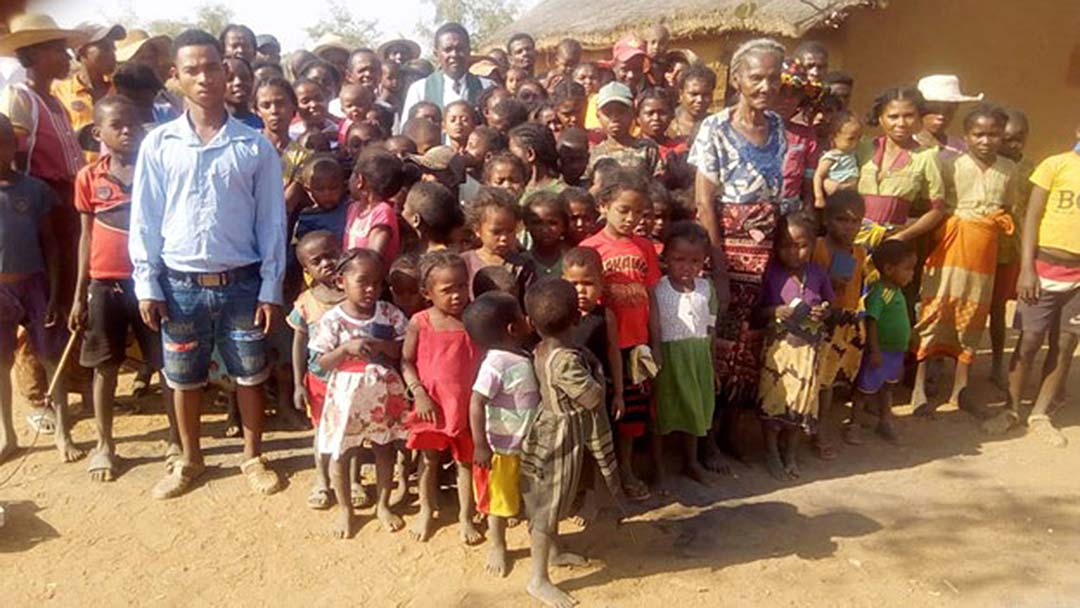
A rural congregation where FOMM has evangelists and outreach programs
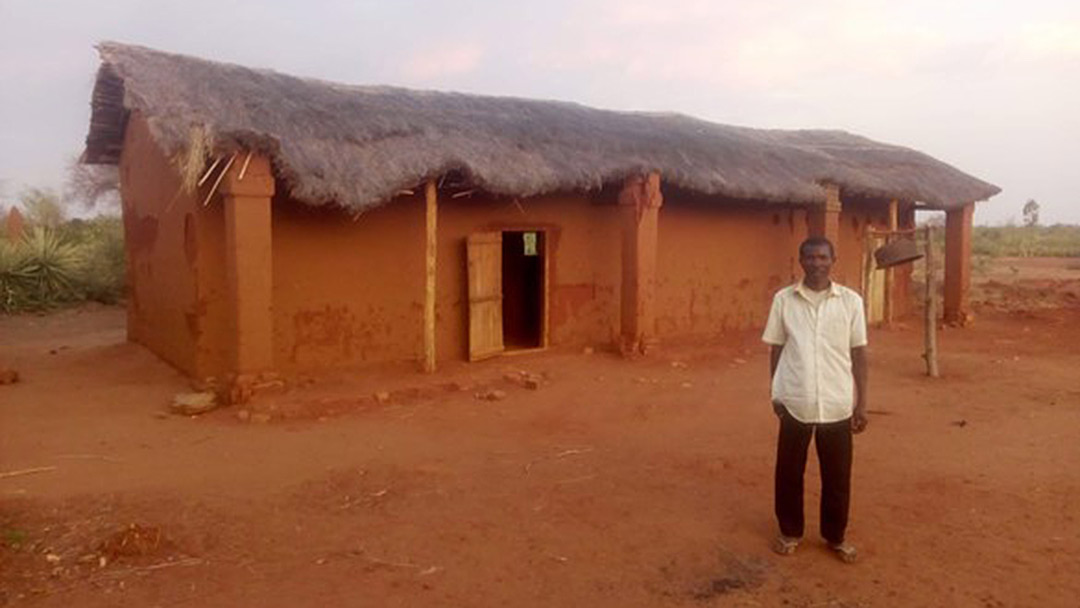
A rural church building with the community waiting for funds from FOMM to replace the grass roof with a metal roof
An Eye-Opening Revelation
David Lerseth says, “These two advantages presented an ideal opportunity for a new model of global mission. It was no longer about sending missionaries and their families to a foreign land at great expense, as I was accustomed to doing in my previous roles. It was a paradigm shift to a new model that involved ‘getting the work done’ rather than ‘doing the work’.
What did the new model require? Primarily, developing trust relationships and working alongside locals who already had the vision and training to do the work, but simply lacked the low level of resources required to move ahead to fulfil their vision.”
A Radical Idea for Funding Mission Projects
“Another radical idea was added to these two advantages,” says David Lerseth. “What if the mission organization in the USA could operate at no expense, with everyone volunteering their time to raise funds for mission projects? In other words, the organization would operate with no salaries, no administrative cost and no overheads. This would mean every penny raised would go toward projects, providing an additional, massively efficient level of empowerment to the mission work. Imagine the impact!”
But could this be achieved within a culture of professional mission work? David took a step of faith to implement this model and this is how Friends of Madagascar Mission has been running for 13 years.
“With prayer and the Lord’s guidance we were able to identify a team willing to work with this model, which has enabled us to be 50-100 times more effective than the old model of sending missionaries overseas to do the work. For example, the 54 full-time evangelists we now support cost around $60,000 per year in total for salaries and medical expenses. Compare this with the cost of sending 56 evangelists to Madagascar under the old model. Besides years of language and cultural training, we would be looking at more than $120k per evangelist, which is a total of around $6.5 Million per year. In addition, a CEO or executive salary for this type of nonprofit could be in the $200k-$300k range – another significant saving that goes directly towards mission projects. The new model is definitely all about the team!”
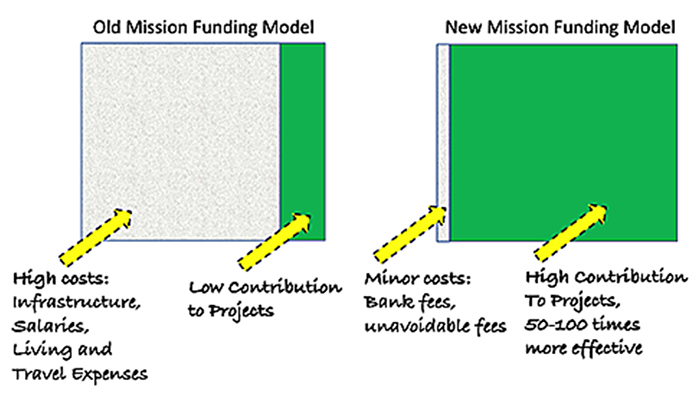
Illustration of the relative effectiveness of the old and new mission funding models. The new model with its volunteer team represents a sustainable approach due to not being vulnerable to changing economic currents.
A Snapshot of FOMM’s Growth Over 13 Years with the New Model
Financial support since 2010:
2010: $7,439
2021: $456, 019
Total funds raised since 2010: ($2,000,000+)
Allocation of funds:
100% given to designated projects
0% given to salaries, property rentals and administrative overheads
Number of evangelists supported:
2011: 3
2022: 56
The Scope of FOMM’s Mission Projects
FOMM currently supports eight main mission programs in Madagascar. These are based on two documented strategies for projected growth over 5-year periods: Prison Ministry Strategy and Village Redemption Strategy.
The projects are:
- Evangelists: 56 individuals proclaiming the gospel in unreached areas
- Prison Ministry: outreach and vocational training
- Nofy i Androy: support of young rural mothers to complete schooling and go to post-secondary education
- Drip Irrigation: water research and well digging/repair/maintenance
- School for the Visually Impaired: preparing students to live independently and productively
- Bible Schools: training evangelists and catechists
- Ejeda Hospital Nutrition: providing food for patients
- Tandroy Language Bible Printing: for the group of people in southeastern Madagascar who prefer their cultural language to the official Malagasy language
Prisons with Established Outreach Ministries
The diagram at right shows the prisons where FOMM has outreach and evangelism programs.
In 2011, only one prison had an outreach program.
In 2022, 25 prisons had programs, with four new prison outreaches planned for 2023.
The number on the left indicates the order of the prison ministry outreach opened.
The top number (red) indicates the number of volunteers working in the prison.
The lower number (green) indicates the number of prisoners in the prison.
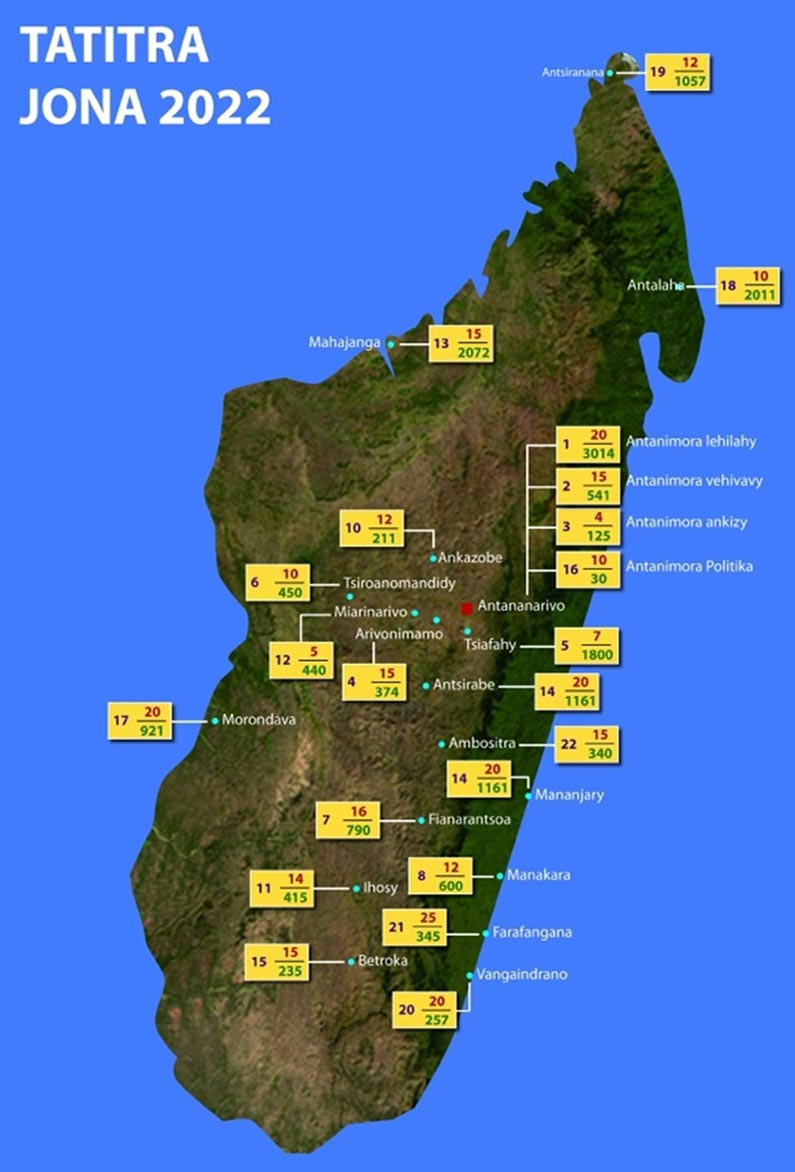
FOMM prison outreach ministries
Nofi I Androy Tutoring Center
Another of FOMM’s projects is Nofi i Androy (“The Dream of Androy”), a tutoring center in Ambovombe where 400 rural girls and young mothers are supported to complete their schooling and helped to progress to university or post-secondary vocational training.
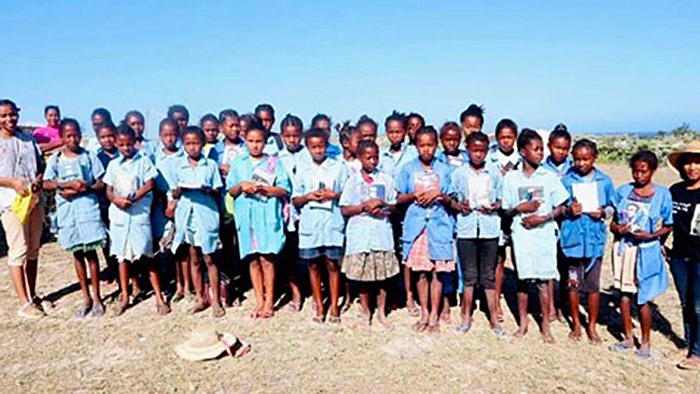
Nofy i Androy tutoring center in Ambovombe, Madagascar
Reflections on the Growth of FOMM Over the Past 13 Years
In reflecting on the growth of FOMM over the past 13 years, the following factors have come to the fore as characteristics of the new model being used:
Donors enjoy knowing that 100% of their donation will go to designated projects.
- FOMM practices ‘relational stewardship’, where donors receive personal thanks and information updates about the impact of their donations.
- FOMM does not ‘own’ any projects, thus removing a responsibility that would be very difficult to manage; we draw alongside individuals with vision and empower them to implement projects through financial enablement, moral support and prayer.
- FOMM does not assume to know the best answers to problems. For example, in a current project at a children’s prison in the town of Antalaha, we thought that evangelists would benefit from having bicycles to travel to and from the prison. The leader of Prison Ministry Madagascar pointed out that bicycles would not be the best mode of transport for taking resources and food to the prison, but a rickshaw would be more suitable as it could be used to generate additional income for the ministry when not in use for transport to the prison.
- FOMM receives regular confirmation of the effectiveness of its programs, with locals affirming that we give 100% of what we promise and have done so every year since we began.
- Planning for strategic growth with documented blueprints for expansion, underpinned by a very rigorous system of accountability with a 3-way audit system. Quarterly reports have been provided for every project since the start of FOMM, and a board member of FOMM who has also served on the boards of international aid agencies has commented that FOMM has the most robust system of accountability he has ever encountered.
In Conclusion
FOMM has become a growing and vibrant contemporary mission movement. David Lerseth says, “It is my hope and prayer that many other mission organizations would consider this new model, disband their expensive infrastructure and take the radical step of faith so that mission work can be expanded rapidly to be 50-100 times more effective. Individuals who have achieved a relative level of financial security and who want to make a significant impact through service to the Lord’s Kingdom with the next chapter of their lives can adopt this model.”
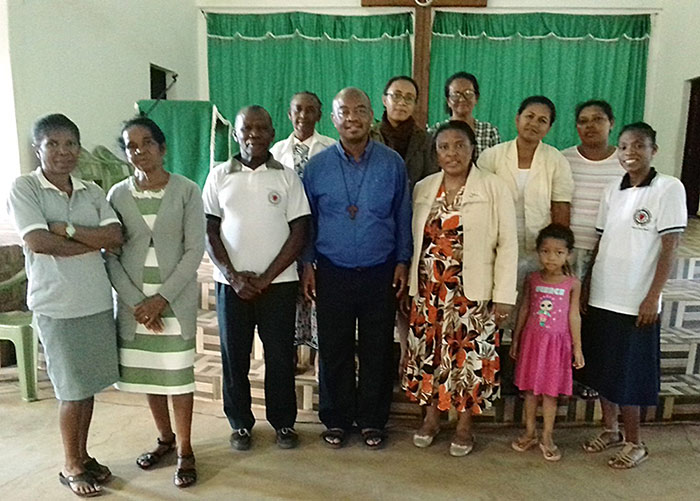
Pastor Theodore Rajaonary, National Coordinator of Prison Ministry Madagascar (PMM), conducting training with his team at the opening of a new prison outreach at Sambava in the northeast of Madagascar in 2022
